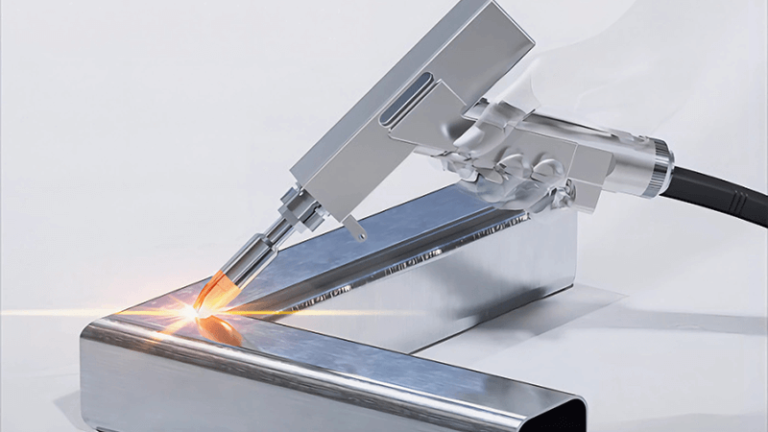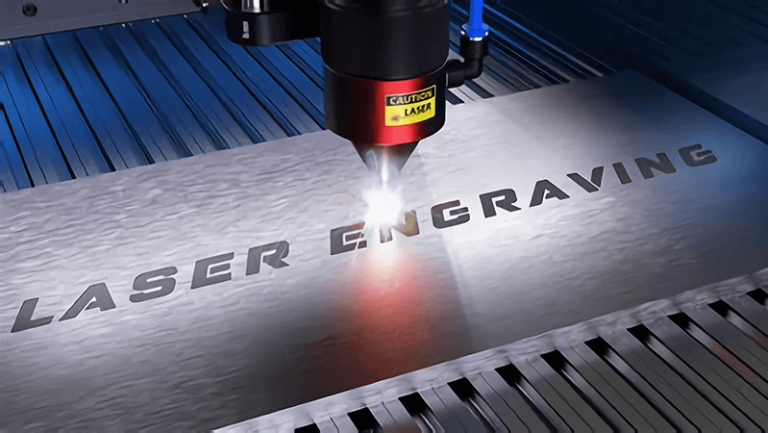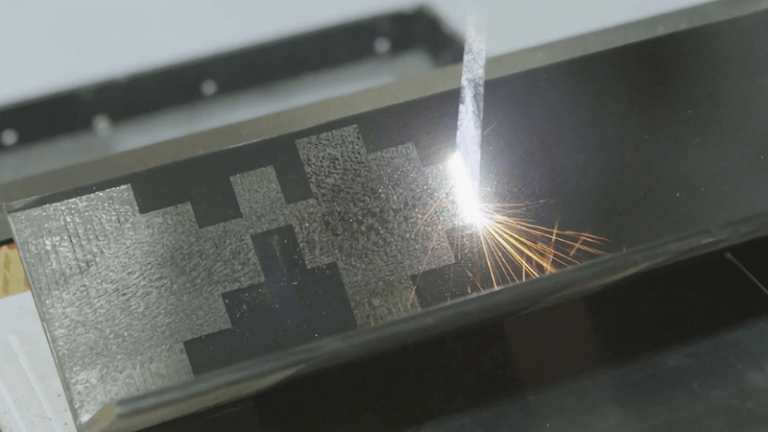Laser welding is one of the most precise and efficient methods in modern manufacturing. However, achieving flawless welds requires more than just a powerful machine. Choosing the right shielding gas is crucial for ensuring strong, clean, and precise welds. But how do you select the perfect shielding gas for your laser welding needs?
The right shielding gas for laser welding is essential to protect the weld pool from oxidation and contamination. The choice depends on the material being welded, the welding process, and the desired welding characteristics. Gases like argon and helium are commonly used, each offering distinct advantages for different welding situations.
Now that we've established how important the right shielding gas is for laser welding, let's take a closer look at the different types of gases, their specific uses, and how they can affect the final outcome of your welds.
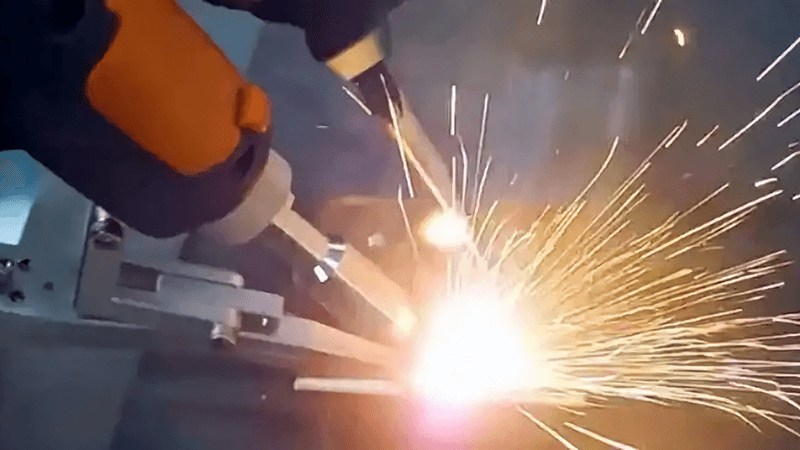
What is the Shielding Gas?
Shielding gases play a critical role in protecting the molten metal during the laser welding process. They form an inert atmosphere around the weld pool, preventing contamination that could weaken the weld. But what exactly is a shielding gas, and why is it so important?
Shielding gases are used in welding to prevent air from coming into contact with the weld pool. They ensure the metal doesn’t oxidize or absorb harmful elements, which can cause defects. Without proper shielding, the weld’s strength and quality can be compromised.
In laser welding, shielding gases1 are essential for controlling the environment around the molten metal. Here's a breakdown of how shielding gases work:
Function of Shielding Gases
Shielding gases protect the weld pool from oxygen and nitrogen in the air, which can cause oxidation and other defects. They also help stabilize the arc and prevent spattering. Essentially, shielding gases maintain the integrity of the weld by creating an inert or controlled atmosphere.
A table below outlines some of the most common shielding gases used in laser welding and their key functions:
| Gas Type | Function | Key Advantages | Common Uses |
|---|---|---|---|
| Argon | Inert gas, prevents oxidation | Low cost, stable arc, clean welds | Stainless steel, aluminum welding |
| Helium | High thermal conductivity | Higher heat input, deeper penetration | Thick material, high-speed welding |
| Carbon Dioxide2 | Reactive gas with high penetration | Enhances heat input, deep welds | Mild steel, thicker metals |
| Argon-CO2 Mix | Combination of argon3 and CO2 | Balanced heat input and stability | Mild steel, general applications |
Importance in Laser Welding
In laser welding, a controlled atmosphere is critical because it minimizes the risk of weld defects. Shielding gases ensure that the weld pool remains clean, preventing the introduction of impurities. This is particularly important when welding high-value materials or when precision is essential.
In short, shielding gases are a vital part of the laser welding process, ensuring that the weld pool remains clean, free from contaminants, and protected from environmental factors.

What Kinds of Laser Welding Gas?
Laser welding requires specific gases depending on the type of material being welded and the welding process itself. But which gases are most commonly used, and how do they impact the welding results?
Common laser welding gases include argon, helium, and carbon dioxide. Argon is the most frequently used due to its stability and cost-effectiveness. Helium provides higher heat input, ideal for faster welding on thicker materials. Mixtures of gases are also used for specialized applications.
Each shielding gas has distinct properties that make it suitable for different welding tasks. Here's an overview of the most commonly used gases:
1. Argon
Argon is the most commonly used shielding gas due to its cost-effectiveness, easy availability, and ability to produce stable welds. It is ideal for welding thin materials like stainless steel, aluminum, and titanium. Argon4 is also preferred because it minimizes spatter, resulting in cleaner welds.
2. Helium
Helium5 is used primarily when high heat input is required. It has a higher thermal conductivity than argon, which means it helps to create a more intense arc, leading to deeper penetration. This makes it ideal for welding thicker materials and achieving faster welding speeds. However, helium is more expensive than argon, so it is often used in combination with argon to balance cost and performance.
3. Carbon Dioxide6
Carbon dioxide (CO2) is sometimes used in laser welding, especially when welding ferrous materials like mild steel. It enhances the penetration of the weld pool and is often used for welding thicker metals. However, CO2 can introduce more spatter than argon or helium, which may require post-weld cleaning.
4. Gas Mixtures
Mixtures of gases, such as argon-CO2 mixtures or argon-helium mixtures, combine the advantages of each individual gas. For example, an argon-helium mixture can provide a combination of stable arc and higher heat input, making it suitable for a range of materials and welding speeds.
5. Nitrogen
Although not as commonly used, nitrogen can sometimes be added to gas mixtures for specialized applications, particularly in industries like aerospace. Nitrogen enhances the stability of the arc and can be used for welding materials like titanium.
In summary, selecting the right gas depends on the specific welding task and the material involved. Each gas has unique advantages and limitations, and understanding these can help you optimize your laser welding process.

What are the Commonly Used Shield Gases for Laser Welding?
Not all shielding gases are created equal. While there are several options, certain gases are more commonly used due to their specific advantages in laser welding applications. But which ones are most often chosen by industry professionals?
Argon, helium, and their mixtures are the most commonly used shielding gases for laser welding. Each gas offers distinct advantages depending on the material, welding speed, and the desired characteristics of the weld. Argon is favored for its cost-effectiveness and stability, while helium is preferred for faster welding on thicker materials.
The choice of shielding gas often comes down to the specific needs of the welding project. Let’s take a deeper look at the most commonly used gases:
1. Pure Argon7
Argon is widely used because of its cost-effectiveness and ability to produce stable welds. It is ideal for thin materials and is particularly favored for stainless steel, aluminum, and titanium. Argon helps produce clean, aesthetically pleasing welds with minimal spatter, making it a go-to choice for many applications.
2. Helium and Helium Mixtures8
Helium offers better heat conductivity than argon, making it suitable for high-speed welding and thicker materials. It also produces a higher energy density, which allows for deeper penetration. A mixture of helium and argon can provide the best of both worlds, offering stability and heat input for thicker workpieces.
3. Argon-CO2 Mixtures9
When welding mild steel, a mixture of argon and carbon dioxide is often used. The addition of carbon dioxide increases the heat input, making it easier to penetrate thicker materials. However, these mixtures can cause more spatter, which might require extra cleaning after the welding process.
In the end, the choice of shielding gas depends largely on the material type, welding speed, and specific performance needs.
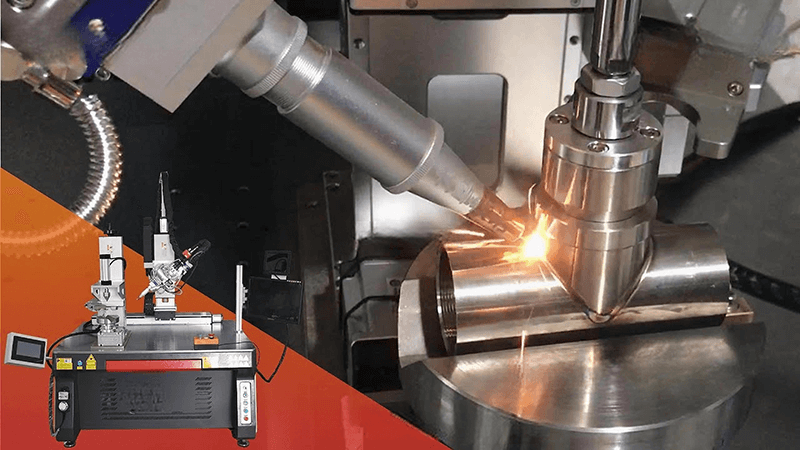
How to Select the Right Shield Gases for Laser Welding?
Selecting the right shielding gas is crucial for achieving high-quality laser welds. But with multiple options available, how do you determine which one is best suited for your particular application?
To select the right shielding gas, consider factors like material type, welding speed, and heat input requirements. Argon is a solid all-around choice, while helium is better for thicker materials or high-speed welding. Gas mixtures can offer a balance of both performance and cost.
Choosing the right shielding gas10 requires you to understand your specific welding conditions and the material being welded. Here’s a practical guide on how to select the ideal gas:
1. Material Type
The material you’re welding plays a significant role in choosing the right shielding gas. For example, argon is preferred for welding stainless steel, aluminum, and titanium due to its stability and ease of use. For steel and other ferrous metals, argon-carbon dioxide mixtures11 provide the best penetration and weld strength.
2. Welding Speed
If you’re welding at higher speeds or working with thicker materials, you’ll need a gas that provides higher heat input. In this case, helium is an excellent choice due to its ability to create deeper welds and increase the overall welding speed. However, keep in mind that helium is more expensive than argon.
3. Cost vs. Performance
Balancing cost with performance is essential. While helium can enhance welding quality, it’s more costly than argon. For general applications, argon might be sufficient, but for high-speed welding or thicker materials, helium or a helium-argon mixture12 might be more beneficial.
By considering these factors, you can select the best shielding gas for your laser welding projects and optimize your results.
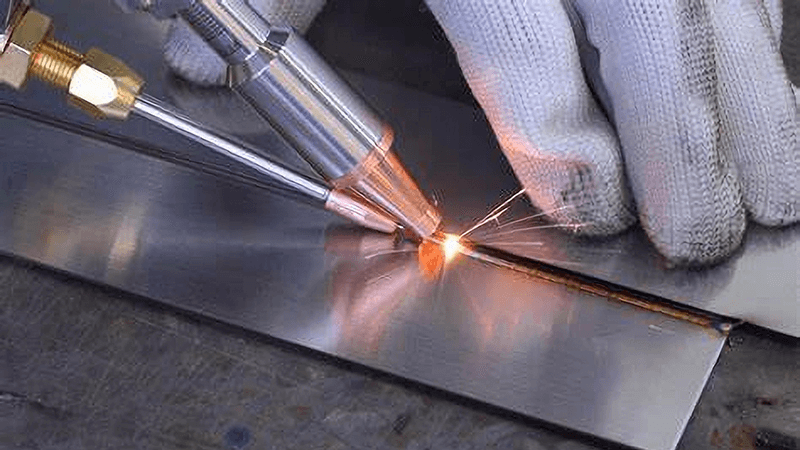
How Does Shielding Gas Affect Weld Morphology?
The shielding gas you choose doesn’t just affect the cleanliness of your weld; it can also influence its morphology, including penetration depth, heat-affected zone, and overall strength. So how exactly does shielding gas impact weld morphology?
The shielding gas influences various aspects of the weld morphology, such as penetration depth, weld bead shape, and the heat-affected zone. Gases like helium provide deeper penetration and a narrower heat-affected zone, while argon results in a broader, more controlled heat zone.
Understanding how shielding gases13 affect weld morphology is crucial for producing consistent, high-quality welds. Here's how different gases can influence the weld structure:
1. Heat Input and Penetration Depth
Gases like helium allow for higher heat input, which results in deeper penetration, especially when welding thicker materials. This is ideal for producing strong, deep welds. On the other hand, argon produces lower heat input, leading to shallower welds, which might be more suitable for thin materials.
2. Weld Bead Shape
The gas can also influence the shape of the weld bead. Helium, with its higher heat input, tends to produce a narrower and deeper bead, which is desirable for fast, high-quality welding. Argon, however, creates a wider bead, which is useful for applications where more heat distribution is required.
3. Heat-Affected Zone
The heat-affected zone14 (HAZ) is the area surrounding the weld that experiences temperature changes. Shielding gases like helium help reduce the size of the HAZ, making it ideal for materials that are sensitive to heat distortion. Argon’s broader heat distribution may cause a larger HAZ but is more forgiving for less sensitive materials.
In conclusion, the right shielding gas can help control and improve various aspects of weld morphology, resulting in better weld quality and consistency.
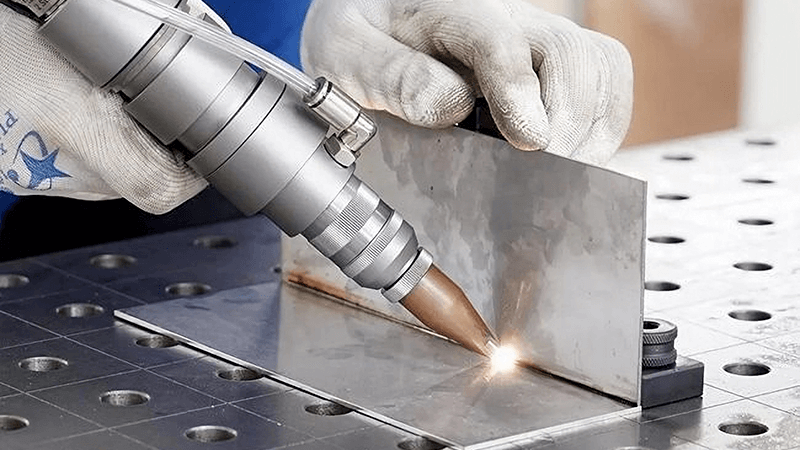
Conclusion
Selecting the right shielding gas is crucial for achieving high-quality welds in laser welding. Factors such as material type, welding speed, and heat input requirements should guide your decision. By understanding the role of gases like argon, helium, and their mixtures, you can optimize the welding process to ensure strong, clean, and precise welds. Contact us to get your laser welding machines15.
-
Understanding the role of shielding gases can enhance your welding quality and efficiency. Explore this resource for in-depth insights. ↩
-
Discover the unique properties of Carbon Dioxide in welding applications and how it enhances penetration and heat input. ↩
-
Argon is a key player in welding; learn how it contributes to cleaner and more stable welds by checking this resource. ↩
-
Explore the advantages of Argon in welding to understand why it's the most popular choice for stable and clean welds. ↩
-
Discover how Helium's properties enhance welding efficiency and speed, especially for thicker materials. ↩
-
Learn about the benefits and drawbacks of using CO2 in welding to make informed decisions for your projects. ↩
-
Explore the advantages of Pure Argon for welding to understand its cost-effectiveness and stability for various materials. ↩
-
Discover how Helium enhances heat conductivity and penetration in welding, making it ideal for thicker materials. ↩
-
Learn about the benefits of Argon-CO2 Mixtures in welding mild steel, including increased heat input and penetration. ↩
-
Understanding the best shielding gas can significantly improve your welding quality and efficiency. Explore this link for expert insights. ↩
-
Learn how argon-carbon dioxide mixtures enhance weld strength and penetration, crucial for effective welding practices. ↩
-
Discover the advantages of helium-argon mixtures for high-speed welding and thicker materials, optimizing your welding projects. ↩
-
Exploring this resource will deepen your understanding of how different gases impact weld quality and consistency. ↩
-
This link will provide insights into the significance of HAZ in welding and its effects on material properties. ↩
-
This link is about get your solutions for your business with Kirin Laser Welding Machine. ↩


